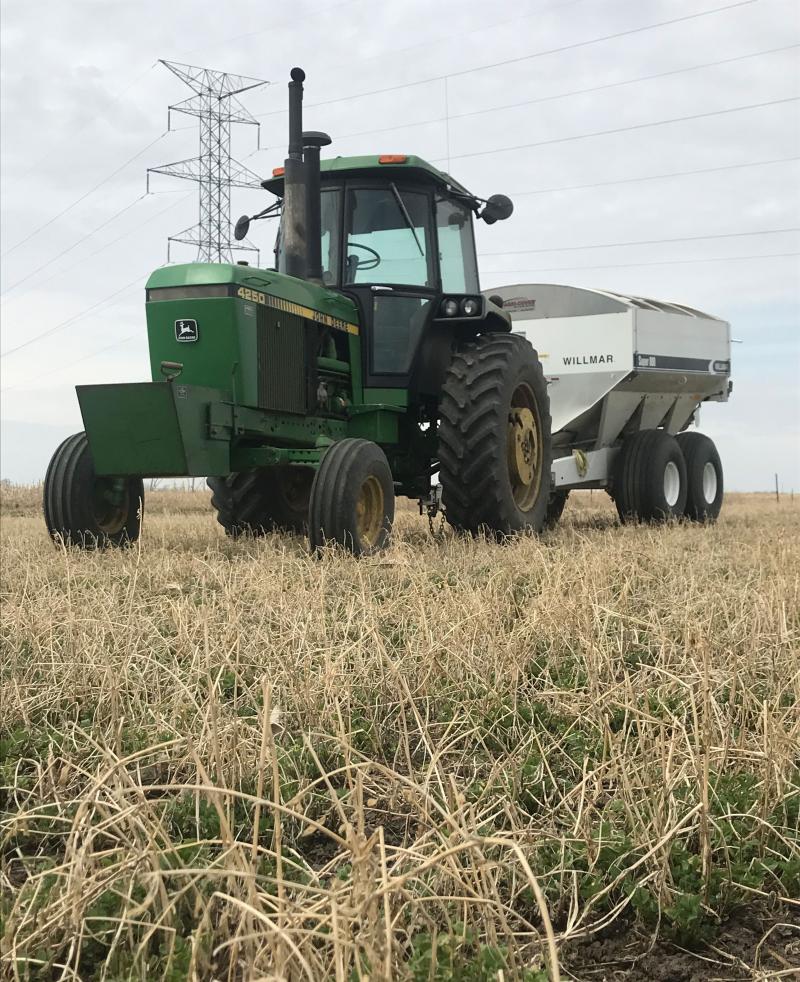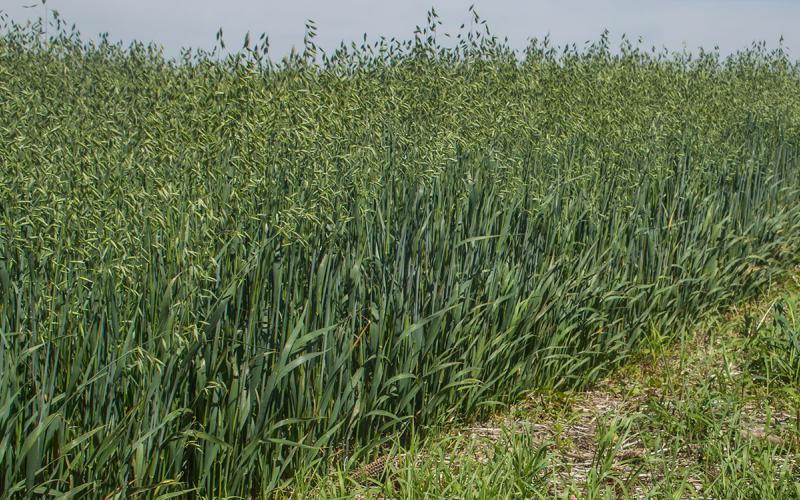
Spring is a busy time for South Dakota farmers and ranchers with planting, calving, and other field preparations. Soil sampling and fertilizing pastures, alfalfa, or other forages might be overlooked. Forages benefit from ideal growing environments just like row crops or small grains. Feed production is vital to many operations across South Dakota and should be managed as well as other cash crops.
Fertilizer recommendations are typically based upon many factors such as soil test results, previous crop, field history, yield goals, and the cost of production. Soil sampling hay ground, full season grazing mixes, and/or pastures can be helpful in determining optimal nutrient rate applications. Keep in mind that traditionally hayed fields may call for more frequent, yearly sampling compared to pastures, as more nutrients are typically removed by haying, whereas nutrient cycling occurs naturally in grazed areas. Pastures may only need to be soil sampled every 2 to 3 years.
Rate of Application
The South Dakota Fertilizer Recommendations Guide provides recommendations based on research for many common forage crops in South Dakota including alfalfa, grass, sudan grass, forage sorghum, field pea, and rye. For a list of many common forage species nutrient recommendations, refer to the South Dakota Fertilizer Recommendations Guide. These recommendations are based upon South Dakota research; however, use personal knowledge of field history as a guide to estimate a realistic yield goal.
Planting a blend of annual cover crops containing annual grasses and broadleaves intended for forage is another popular way to raise feed in South Dakota. Although there are no South Dakota nutrient recommendations for mixes at this time, they tend to benefit from nitrogen fertilizer applied at lower rates; however, careful consideration regarding profitability and livestock health should be made. It may be beneficial to consider adding a small amount of nitrogen fertilizer to grass dominant forage mixes (~30-70 lbs. N).
The South Dakota Fertilizer Recommendations Guide suggests 25 lbs. N/ton of grass forage yield goal, this can serve as a general guideline for grass dominated forage mixes. Consider the species in your mix before fertilizing, as legume species will not form nodules if N fertilizer is applied. It is important to apply the appropriate rate of nitrogen when planting a forage crop so that a yield response is seen, but nitrate buildup in the plant does not occur (typically only in drought situations) that may cause toxicity to livestock. If concerns arise mid-season, tissue sampling can be performed to check nitrate levels in plants.
Timing of Application
Nitrogen is a primary soil macronutrient that all non-legume plants require for optimal growth. However, phosphorus and potassium are also important macro nutrients required for plant heath in grass and broadleaf forages. Legumes such as alfalfa fix atmospheric nitrogen for growth and development.
- Spring fertilizer applications (April-early May) should occur in cool season grasses found in grassy hay meadows, pastures, and alfalfa fields. These plants grow at faster rates in the spring and early summer before hot temperatures occur. Cool season grasses will begin to thrive again as temperatures cool down in late summer and early fall as well.
- Common SD cool season grasses: western wheatgrass, crested wheatgrass, smooth bromegrass, Kentucky bluegrass, and tall fescue.
- Early summer fertilizer applications (June) can be made on warm season grasses. These species tend to put on the most growth June through August.
- Common SD warm season grasses: switchgrass, big bluestem, Indian grass, blue grama, and foxtail millet.
For cool/warm season mixed grass pastures, spring application should provide adequate nitrogen supply if SDSU Extension fertilizer recommendations are followed. Full season annual cover crop mixes intended as forage are typically fertilized just prior to planting. Split nitrogen application is an option for cool/warm season mixed pastures or annual forage, but often not practical for most producers as summers become busy with cash crop and/or livestock management.
In Summary
Forages are an important part of many South Dakota farm or ranch operations. Be sure to check over your forage acres this spring, and consider the following:
- Soil sample and test hayed acres annually if possible, and grazed areas every 2 to 3 years.
- Use the South Dakota Fertilizer Recommendations Guide to determine the appropriate level of fertilizer to apply to single species forages. For forage mixes, small amounts of nitrogen fertilizer may be appropriate, but be aware of livestock nitrate toxicity issues that may arise if drought conditions occur.
- Apply fertilizer at the appropriate time. Cool season plants and cool/warm season mixes should receive fertilizer in the early spring. Warm season species can be fertilized in the early summer.


